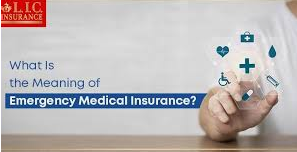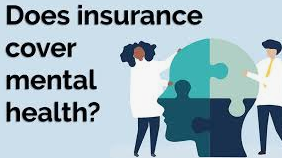1. Introduction
Hey there!
Having a strong safety net is extremely important in a world where medical problems can happen at any time. Peace of mind and protection from the potentially disastrous expenses of unforeseen medical crises are provided by emergency medical insurance, which is an essential component of financial and health security. Learn all you need to know about emergency medical insurance, how it works, and what to look for in a coverage in this detailed guide.
The importance of having emergency medical insurance is growing as healthcare costs and treatment complexity both rise. In the event of a medical emergency, knowing the ins and outs of this crucial coverage might mean the difference between financial stability and crushing debt, regardless of your age.
We will explore the many forms of emergency medical insurance, their salient characteristics, and how to get and make use of this crucial protection throughout this post. We will go over the ins and outs of various products that can protect your health and finances in times of need, including domestic coverage and international travel insurance.
This all-inclusive book will teach you all you need to know about emergency medical insurance so you can safeguard yourself and your family from any unexpected medical problems that life throws at you.
2. Can You Explain Emergency Medical Insurance?
A specific type of health insurance, emergency medical insurance (EMI) safeguards policyholders financially in the case of unexpected and unanticipated medical crises. Emergency medical insurance, in contrast to more general health plans, zeroes in on serious, life-threatening conditions that necessitate rapid medical treatment.
The primary function of emergency medical insurance is to provide a financial cushion for people to deal with the astronomical expenses that come with medical emergencies. This insurance usually pays for things like emergency department visits, urgent surgeries, and ambulance services, which are considered important medical operations that can’t be delayed otherwise serious health problems or death could result.
One of the main goals of emergency medical insurance is to make sure that people can afford to get the urgent care they need when they need it. Those without proper health insurance may find themselves in deep financial trouble or perhaps bankrupt due to the exorbitant costs associated with emergency medical treatment. A large chunk of these expenses are covered by emergency medical insurance, so patients can concentrate on getting well instead of fretting over how they will pay for it.
A number of critical distinctions exist between standard health insurance and emergency medical insurance:
1. Coverage Scope
Emergency medical insurance is designed to cover those pesky, time-sensitive, potentially life-threatening medical emergencies, as opposed to the more generalized preventative care, regular checkups, and non-emergency treatments that are typically covered by standard health insurance.
2. Temporary Coverage
Typically, emergency medical insurance is meant to offer coverage for a brief event or period, as when you’re traveling abroad. Regular health insurance, on the other hand, usually provides coverage that does not end.
3. Emergency-Only Coverage
Only true emergencies, as specified in the policy, will trigger the activation of the emergency medical insurance. However, routine health insurance covers both urgent and non-urgent medical care.
4. Cost Structure
Because of the narrower focus of emergency medical care, premiums for this type of insurance tend to be less expensive than those for more comprehensive policies.
5. Claim Processing
In contrast to the lengthy processing delays associated with standard health insurance claims, the procedure for filing an emergency medical insurance claim is typically streamlined to reflect the critical nature of the covered incidents.
Anyone looking to supplement their current health insurance with additional emergency coverage or who wants independent protection against unexpected medical catastrophes would do well to familiarize themselves with these differences.
3. Many Forms of Serious Illness Insurance
There are a variety of emergency medical insurance plans available to meet a wide range of demands. Individuals can better select the most suitable coverage for their unique circumstances if they have a firm grasp of these kinds. Emergency medical insurance typically falls into the following types:
a) Individual Term Health Insurance
Designed to cover unexpected medical expenses, this policy is acquired independently of standard health insurance. This policy is perfect for people who have basic health insurance but would need extra coverage in case of unexpectedly expensive medical emergencies. For individuals whose health insurance plans have a high deductible, a standalone policy might fill in the gaps until comprehensive coverage begins to pay out.
b) Medical Insurance for Unexpected Travelers
Coverage for medical crises that may arise while traveling is provided by this sort of insurance, which is designed for persons traveling both domestically and abroad. Coverage for the sudden development of pre-existing conditions, repatriation of remains, and emergency medical evacuation are common benefits. It is possible to acquire travel emergency medical insurance either alone or as an add-on to more extensive travel insurance policies.
c) Medical Coverage for Emergencies in the Short Term
Those in need of short-term security, usually for a few days to a few months, might look into this coverage option. Those who are unemployed, just out of college, or waiting for their employer-sponsored health insurance to start can benefit greatly from it. Having short-term emergency medical insurance can be a lifesaver while you’re in between jobs.
d) Extra Health Insurance for Unexpected Medical Emergencies
These plans are meant to supplement primary health insurance by covering unexpected medical costs. In the event of an emergency, they can assist pay for expenses that the primary insurance does not cover entirely, such as deductibles, copayments, or charges paid while outside of the insurance network.
e) Medical Insurance for Unexpected Events
Medical expenses stemming from accidents are covered by certain insurance policies. Accidental accidents might incur costs for visits to the emergency department, hospital stays, and subsequent treatment, all of which are usually covered by these policies.
f) Health Insurance with a Critical Illness Exclusion
Critical illness insurance, which is not an EMT policy per se, pays out a lump amount in the event of a diagnosis of certain terminal illnesses. Emergency medical expenses related to the listed conditions and other relevant charges can be reimbursed with this.
g) Health Insurance for Groups with Emergencies
Coverage for a group of people is provided by group emergency medical insurance, which is often supplied by organizations or corporations. The greater the number of people covered by the plan, the lower the overall premiums will be.
h) Policies that cover medical emergencies abroad
International emergency medical insurance offers extensive coverage for medical crises that may occur in foreign countries and is specifically designed for persons who work overseas, travel abroad for an extended period of time, or are expatriates. Coverage for both urgent and non-urgent medical care, as well as support for many languages, are common elements of such policies.
i) Medical Insurance for Activities Relating to High-Risk Activities
Extreme sports, adventurous travel, and hazardous occupations are examples of high-risk pursuits for which certain insurance companies provide specific emergency medical coverage. Injuries received while participating in these activities may not be covered by regular insurance, but these policies usually pay for emergency medical bills associated with such injuries.
There are a variety of emergency medical insurance plans, each with its own advantages, disadvantages, and best uses. Think about your present health insurance, your way of life, your travel habits, and any particular risk factors before settling on a policy. You may get the greatest emergency medical insurance policy to supplement your current coverage and meet your specific needs by giving careful consideration to the factors listed above.
4. The Value of Health Insurance in Case of an Emergency
Protecting one’s health and financial stability are two of the most important functions of emergency medical insurance. Its significance is paramount, especially in the current healthcare system where expenses have the potential to rapidly balloon. Important reasons to get emergency medical insurance include the following:
a) Security of Funds
Exorbitant prices are frequently associated with medical emergency. A trip to the emergency department can easily rack up thousands of dollars, and for more serious illnesses that necessitate surgery or hospitalization, the costs can easily reach into the tens of thousands, if not hundreds of thousands. By providing financial protection in the event of unexpected medical bills, emergency medical insurance helps individuals avoid going bankrupt.
b) In a timely manner
In times of crisis, every second is crucial. When people have emergency medical insurance, they can rest easy knowing that they won’t have to worry about how to pay for the treatment they need right away. Taken quickly, this measure can save lives in dire circumstances.
c) A sense of calm
You can rest easy knowing that you are covered in the event of a medical emergency. Everyone in the family, even dependents, may rest easier knowing that they won’t have to worry about the emotional and financial fallout of a health crisis.
d) Preparation for All Possible Outcomes
There is no telling when a medical emergency may arise; life is full of surprises. If you want to be ready for anything, whether it’s a sudden sickness, an accident, or a complicated medical issue, emergency medical insurance is a must-have.
e) Enhancing Preexisting Coverage
If you already have health insurance but have gaps in your coverage due to things like high deductibles or out-of-network fees, an emergency medical policy can help pay those expenditures.
f) Safety While Traveling
Having emergency medical insurance is vital for people who travel a lot or who go to isolated places because it protects them from the expensive medical care overseas and the possibility that they may need to be evacuated.
5. Important Elements of Health Insurance for Unexpected Medical Bills
In order to make educated coverage decisions, it is vital to understand the main elements of emergency medical insurance policies. Although details could differ throughout plans and service providers, here are a few things to keep an eye out for:
a) Hospital Day Coverage
This is the backbone of the majority of EM plans; it pays for the facility fee, the doctor’s fee, and any diagnostic tests that may be necessary during an emergency room visit.
b) 911 Services
When medically required, many insurance will pay for the expense of an ambulance’s transportation, whether it be by ground or air.
c) Stay in the hospital
Room and board, nursing care, and other hospital services are covered while a patient stays in the hospital due to an emergency.
d) Operative Techniques
In most cases, these policies will pay for any necessary emergency surgeries and their related expenses.
e) Medical Evaluations
Insurance will pay for imaging studies like X-rays or MRIs as well as laboratory testing that are essential for diagnosing serious medical issues.
f) Medications via Prescription
Prescription drugs used in an emergency setting are often covered by health insurance plans.
g) Care after the Initial Visit
Some plans pay for subsequent appointments and treatments that are directly connected to the original emergency.
h) Health Care Evacuation
Coverage for transportation to the closest suitable medical institution or, in the event of an emergency, back to the insured’s home country is an essential component of travel insurance.
i) Returning Cadavers
If the unthinkable should happen, some policies will pay to have the dead returned to their native country.
j) Nonstop Support Services
Assistance with medical referrals and claim processing are only two of the many emergency medical insurance carriers’ round-the-clock support services.
k) Insurance for Conditions That Already Exist
Acute onsets of pre-existing conditions may be covered to a lesser extent under certain policies during emergencies.
l) Compensation for Unintentional Injury or Death
In the event of a covered emergency, some policies provide extra compensation in the event of accidental death or loss of limbs.
6. The Basics of Prescription Drug Coverage
In order to make good use of emergency medical insurance, it is essential to understand how it works. To give you an idea of how these regulations normally work, consider the following:
a) Starting the Policy
The purpose of emergency medical insurance is to kick in when a true emergency occurs. An emergency, according to most policies, is any condition that develops out of nowhere and, if left untreated, could cause serious harm or even death.
b) Getting Help
The insured should go to the closest suitable institution without delay in the event of a medical emergency. Prioritizing the acquisition of medical assistance in a life-threatening emergency always takes precedence over concerns regarding insurance issues.
c) Warning
Notifying the insurance company as quickly as possible following the receipt of emergency medical treatment is often a requirement of many policies. For this purpose, several suppliers provide round-the-clock hotlines.
d) Ensuring Coverage
It may be necessary for either the insured or the healthcare provider to contact the insurance company to confirm coverage. In order to guarantee that patients receive care promptly, several emergency medical insurance companies have procedures in place for quick verification.
e) Obtaining prior approval
Although emergency care usually does not necessitate pre-authorization, the insurance company may request approval for specific follow-up treatments or transfers to other hospitals.
f) Reimbursement or Direct Billing
The insurance company may choose to pay the healthcare provider directly (direct billing) or refund the insured after they’ve paid for the services (reimbursement model), depending on the policy and healthcare provider.
g) Submitting a Claim
In a reimbursement model, the policyholder must initiate contact with the insurer by filing a claim. To do this, you will typically need to gather relevant paperwork, including medical records and invoices, and fill out claim forms.
h) How to Process and Pay for Claims
After confirming that the treatment was indeed for an insured emergency, the insurance company will pay out in accordance with the policy’s terms.
i) Organization of Advantages
It is possible for emergency medical insurance to work with other policies to establish primary and secondary coverage responsibilities if the insured has other relevant insurance.
When the time comes, having a firm grasp of this procedure can aid policyholders in making the most of their emergency medical insurance by guiding them through the maze of paperwork involved.




